Connecticut is known for its ecological diversity due to varied landscapes and habitats, from mountains and valleys to miles of coastline, all creating a range for a variety of plants and animals.
Among more of the common animals found in Connecticut include white-tailed deer, black bear, fox, skunk, raccoons, coyotes, eastern gray squirrels, eastern cottontail rabbits, and various bird species such as the American robin and downy woodpecker, according to residents, visitors and the state Department of Energy and Environmental Protection.
But some animals found in the state are more elusive and are not as easily recognizable, according to residents and to officials. Because these animals may not be as well-known, they can often be misunderstood or seen as scary, or as threats, the latter of which may not be the case.
Here are five native animals in Connecticut that are considered elusive, endangered, creepy, bizarre, or just plainly misunderstood.
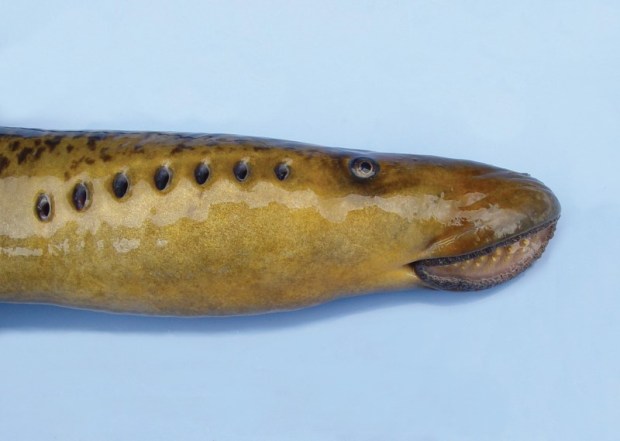 Sea Lamprey (Photo/Credit Connecticut Department of Energy and Environmental Protection)
Sea Lamprey (Photo/Credit Connecticut Department of Energy and Environmental Protection)
They look like an eel, snake, and fish combined.
Native to Connecticut, lampreys often get a bad reputation for their sinister looking mouthparts that some believe could latch onto a human, but that couldn’t be further from the truth, according to Matthew Goclowski with DEEP’s fisheries division. There are two species found in Connecticut including the Sea Lamprey and American Brook Lamprey.
Lampreys have no jaws, but instead possess a sucking disc around the mouth.
“They are a large sized fish and can be up to three-feet long,” Goclowski said. “They have pretty imposing looking mouths that are circular with rows of teeth that they use to grasp onto fish and hold on to suck their blood. But they pose no threat to humans or pets.”
The species is anadromous and spends part of its life in both salt and freshwater. In fact, lampreys only become parasitic when out in the ocean, Goclowski said. When found in the state’s rivers, the species is considered a filter feeder, and it burrows into the sediment. They filter out organic matter and microorganisms from the water column, including algae and other small particles, he said.
“Adults will enter freshwater rivers each year to spawn and their larvae will live in rivers for three to seven years, where they are filter feeders,” he said. “Then they move out into the ocean for a few years in a parasitic stage where they feed on fish. But that parasitic stage only occurs out in the ocean.”
If you see one, don’t kill it, said Goclowski. Lampreys play are an important role in the state’s ecological diversity and act as an important food source, he said.
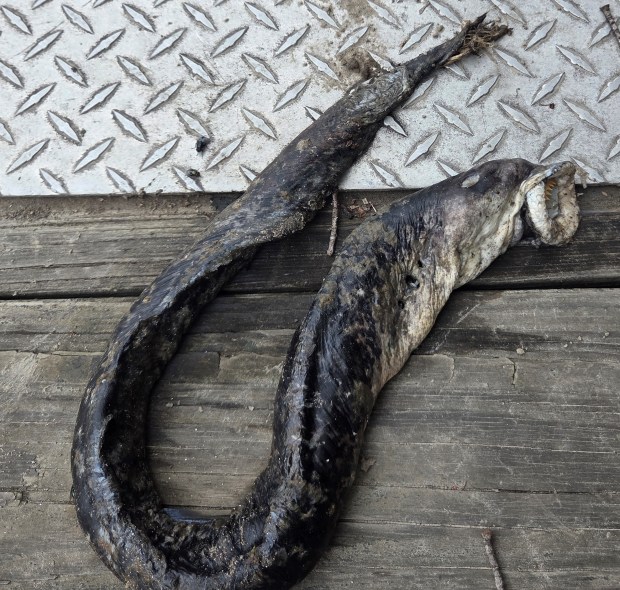 This lamprey, which had died, was seen at Riverside Park in Hartford in July 2025. Hartford Courant.
This lamprey, which had died, was seen at Riverside Park in Hartford in July 2025. Hartford Courant.
“One of the big ecological benefits they have is that adults will swim upriver, spawn, and then die, similar to salmon in the Pacific Northwest. So they are an important source of marine derived nutrients. Once they die, all sorts of things will feed on them and they offer an important boost to the lower end of the food web. They also are important filter feeders helping to aerate the river bed when they are in larvae stage,” he said.
Very few left
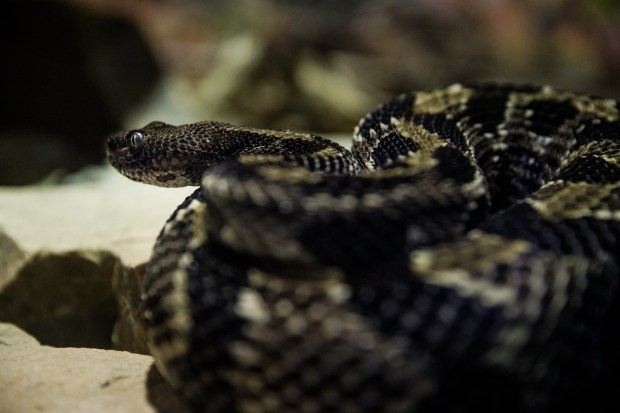
Douglas Hook / Hartford Courant
Riverside Reptiles Education Center owner, Brian Kleinman highlighted that the Timber Rattlesnake was once found in 20 Connecticut towns, but due to human persecution such as intentional killing, habitat destruction, and collection for the pet trade, its population has been reduced to just 10 towns in the central and western portions of the state. (Douglas Hook / Hartford Courant)
While timber rattlesnakes are thought to have been once common throughout the state, the total population is now believed to be less than 500 specimens.
The timber rattlesnake is one of only two venomous species found in Connecticut, according to Dennis Quinn, owner of Quinn Ecological, LLC & creator of CTHerpetology.com. Once documented in over 20 towns in Connecticut, this snake is now limited to isolated populations in about 10 towns in the central and western portions of the state.
Timber rattlesnake populations have declined, mainly because of human activity and persecution, officials said. An illegal pet trade, intentional killing, habitat degradation and fragmentation, and human development have all contributed to their decline, officials said. The other venomous snake in Connecticut is the copperhead.
“This beautifully patterned (rattlesnake) is extremely rare in the state and is listed as an endangered species. It was probably widespread in Connecticut during colonial times, as evidenced by the many land features named “rattlesnake” (i.e., Rattlesnake Mountain). In the past, some Connecticut towns had bounties that encouraged people to collect and kill rattlesnakes, and many dens were repeatedly decimated,” according to a spokesperson for the state’s DEEP.
If you encounter a timber rattlesnake, officials say to observe it from a distance, calmly and slowly back away from it, and allow the snake to go on its way. Quick movements often scare snakes and may provoke a defensive strike.
DEEP officials said the endangered snake is protected and illegal to kill.
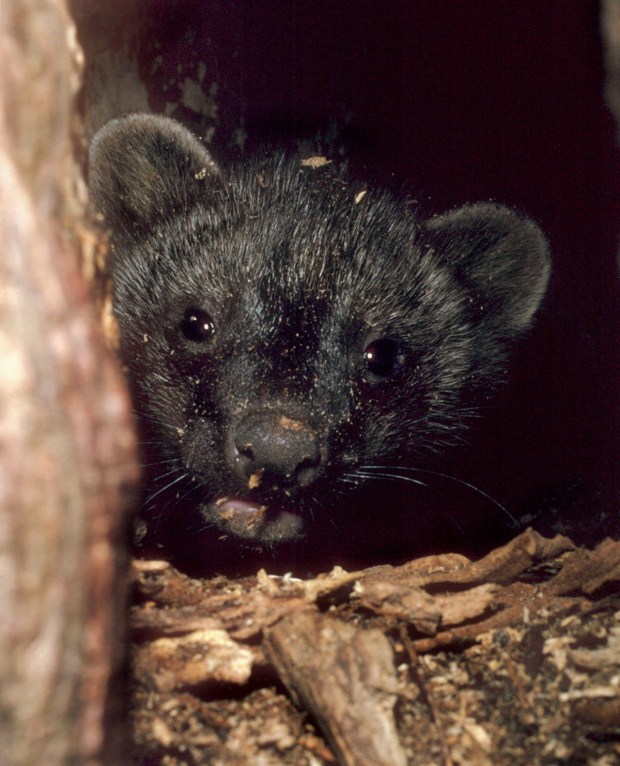 Fisher (Photo/Credit Paul Fusco/CT DEEP-Wildlife)
Fisher (Photo/Credit Paul Fusco/CT DEEP-Wildlife)
While they are sometimes referred to as Fisher cats, they aren’t actually cats and don’t eat fish.
Fishers are part of the weasel family and have a similar long thin body type, although they are stockier and heavier than typical weasels. They can weigh 3 to 18 pounds, according to DEEP’s Fisher fact sheet. The species hunts and eats small prey including mice, voles, squirrels, and rabbits, as well as birds, insects, and even porcupines.
The fisher is native to Connecticut and can sometimes be spotted in backyards. Because they are nocturnal and solitary creatures, they are often considered elusive. They den most often in tree cavities to bear young and territories can range from 10 to 100 square miles, according to the U.S. Fish and Wildlife Service.
Fishers range through New England and much of southern Canada. The species was largely eradicated in Connecticut because of habitat loss and over-trapping by the 1900’s.
In the nineteenth century, fishers became scarce due to forest logging, clearing for agriculture, and overexploitation. By the 1900s, fishers were considered extinct from the state but have slowly come back during the last few decades, according to the state DEEP.
“A project to reintroduce this native mammal into northwestern Connecticut was initiated by the Wildlife Division in 1988. Funds from reimbursement of trapping wild turkeys in Connecticut for release in Maine were used to purchase fishers caught by cooperating trappers in New Hampshire and Vermont,” according to DEEP.
“In what is termed a ‘soft release,’ fishers were penned and fed at the release site for a couple of weeks prior to being released. Through radio and snow tracking, biologists later found that the fishers that were released in northwestern Connecticut had high survival rates and successfully reproduced. As a result of this project, a viable, self-sustaining population of this native mammal is now established in western Connecticut,” DEEP said in a statement.
But officials now say that the population is believed to be declining again. An ongoing study is looking into what may be behind the population decline. Fishers have not been studied as extensively as many other wildlife species, since they are often difficult to observe, according to DEEP.
“Through live-trapping, biologists fit select individuals with lightweight, GPS collars to track their movements on the landscape. The goal of the project is to better understand the gradual decline in the fisher population despite there being plenty of suitable habitat in Connecticut,” DEEP’s wildlife division said in a statement.
The Connecticut Department of Energy and Environmental Protection wildlife division is asking people to report their sightings.
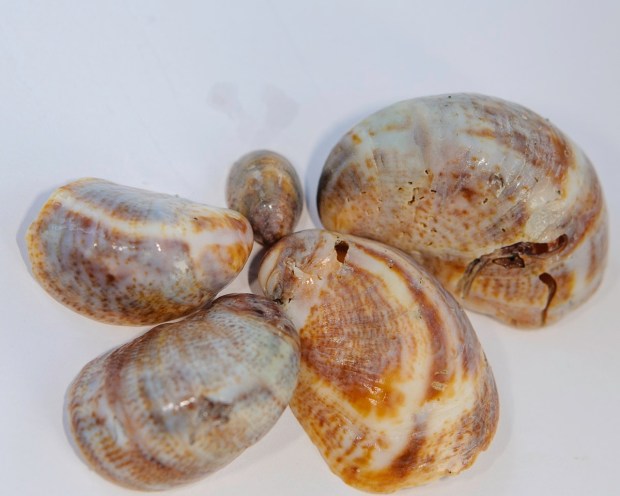 Slipper Limpets (Photo/Credit Connecticut Audubon Society)
Slipper Limpets (Photo/Credit Connecticut Audubon Society)
If you’ve been on a Connecticut beach, you probably have seen their shells.
Slipper limpets are a type of sea snail known for a boat-like shape, with a curved, arched top and a flat, shelf-like deck. The marine snails, also called slipper shells, are found worldwide in shallow waters and often attached to rocks or other shells.
“Even though they don’t look like a snail, they are a snail,” said Dr. Sandra Shumway, research professor emerita at the University of Connecticut’s Avery Point campus.
“And they stack on top of each other. So when you see them in their natural environment, there are long stacks of them and they keep piling up,” Shumway said. “So by nature of not being attached to any permanent structure, they are easy to roll. When the tide, wind, and waves combine, they get pushed up onto the shore in large quantities.”
It’s common to find Slipper limpets shells by the thousands washed up on the state’s beaches near the tide line, often with them still stacked on top of one another, according to officials. The slipper limpet normally lives in stacks of up to 12 individuals, with the largest at the bottom and increasingly smaller animals on each other’s backs.
“They are very, very prolific and have beds that go for acres that can be 6-inches thick. They are also very efficient filter feeders and because of the mucous net they use to feed they can filter out very finite particles. So they help clear the water of phytoplankton,” Shumway said.
They primarily live on the seabed out beyond the low tide mark, she said. While they are native to Connecticut and much of the Northwest Atlantic, they are now considered a serious pest in Europe. Slipper limpets, like other mollusks, feed by filtering, or passing water over their gills. As a result, slipper limpets compete with native mollusks for food and in areas where limpet populations are high, can outcompete oysters, clams, and mussels.
While the species may be considered a nuisance because of their large presence on beaches, slipper limpets are edible, with one high-end Connecticut restaurant even putting them on the menu.
“If you can’t solve it, eat them,” Shumway said. “They have a lot of potential, they taste like a cross between a scallop and a quahog. They have a very nice texture and we did a couple taste tests at conferences with the National Shellfisheries Association and they went over very well. They are very, very tasty and highly underrated.”
Last but not least
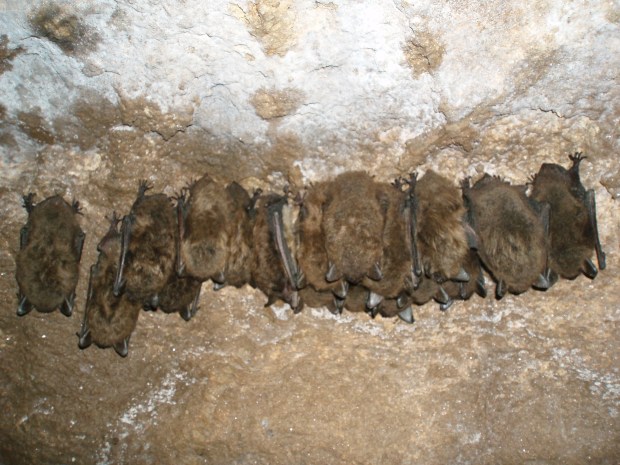
DEEP
These little brown bats are clustered closely together during hibernation in Connecticut. To help protect these bats during this critical part of their life cycle, the DEEP has worked with partners statewide to gate the caves and mines where they spend the winter.
Connecticut bats
Bats are included because, while they are a fascinating mammal that can fly and eat enormous numbers of insects, they often strike fear in people and are not often seen, due to their nocturnal habits. According to DEEP, there are nine different species of bats found in Connecticut, and all but one of them (the big brown bat) are on Connecticut’s List of Endangered, Threatened and Special Concern Species.
But the agency also has noted that “populations of cave bats in Connecticut and across North America have suffered astonishing losses since 2006″ due to a disease known as white-nose syndrome that has “killed millions of bats across 40 states and eight Canadian provinces.” The syndrome is a fungus that grows on the muzzle and wings of bats.
According to DEEP, the affected species, known as “cave bats”, have “declined so dramatically that several were added to Connecticut’s List of Endangered, Threatened and Special Concern Species in 2015.”
Other species, known as tree-roosting bats, or the silver-haired, hoary, and red bat, are not “adversely affected by WNS, but their populations have declined from historical levels in eastern woodlands,” according to DEEP. The agency noted that the three species have been listed as species of special concern in Connecticut since the first official list was released in 1992.
Stephen Underwood can be reached at sunderwood@courant.com

